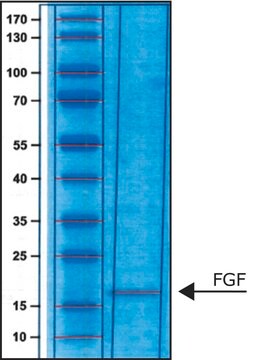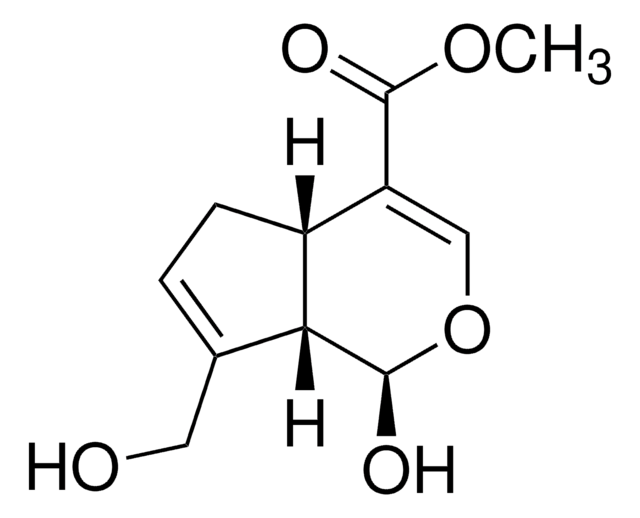F7301
Fibroblast Growth Factor-18 human
>95% (SDS-PAGE and HPLC), recombinant, expressed in E. coli, lyophilized powder
Sinónimos:
FGF-18
About This Item
Productos recomendados
origen biológico
human
Nivel de calidad
recombinante
expressed in E. coli
Ensayo
>95% (SDS-PAGE and HPLC)
Formulario
lyophilized powder
potencia
≤0.5 ng/mL
mol peso
predicted mol wt 21.2 kDa
envase
pkg of 25 μg
condiciones de almacenamiento
avoid repeated freeze/thaw cycles
impurezas
endotoxin, tested
Nº de acceso UniProt
temp. de almacenamiento
−20°C
Información sobre el gen
human ... FGF18(8817)
Descripción general
Acciones bioquímicas o fisiológicas
Forma física
Nota de análisis
Palabra de señalización
Warning
Frases de peligro
Consejos de prudencia
Clasificaciones de peligro
Eye Irrit. 2 - Skin Irrit. 2 - STOT SE 3
Órganos de actuación
Respiratory system
Código de clase de almacenamiento
11 - Combustible Solids
Clase de riesgo para el agua (WGK)
WGK 2
Punto de inflamabilidad (°F)
Not applicable
Punto de inflamabilidad (°C)
Not applicable
Elija entre una de las versiones más recientes:
¿Ya tiene este producto?
Encuentre la documentación para los productos que ha comprado recientemente en la Biblioteca de documentos.
Artículos
Fibroblast growth factors in cell culture and various growth factors for your research
Nuestro equipo de científicos tiene experiencia en todas las áreas de investigación: Ciencias de la vida, Ciencia de los materiales, Síntesis química, Cromatografía, Analítica y muchas otras.
Póngase en contacto con el Servicio técnico









